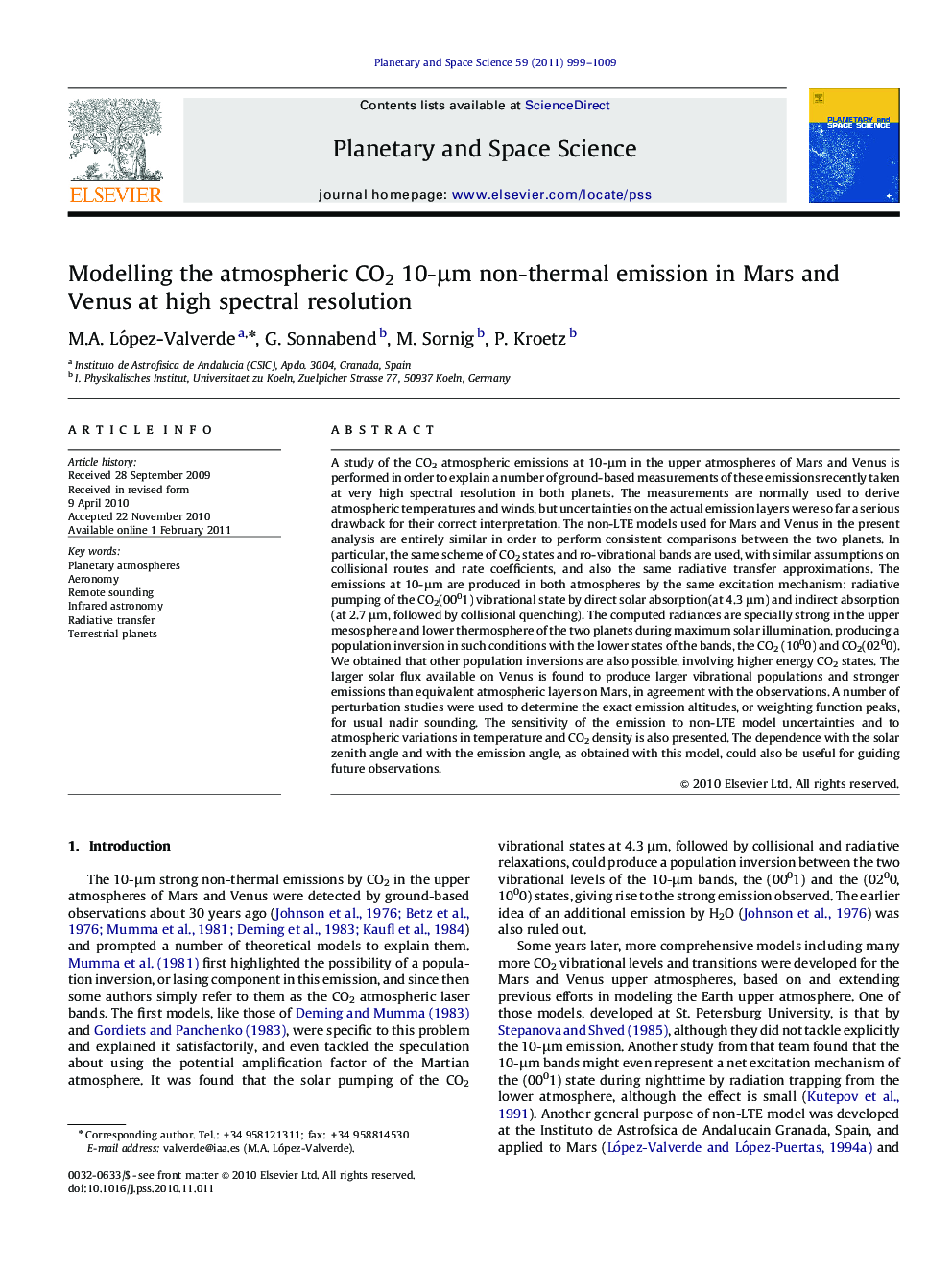| Article ID | Journal | Published Year | Pages | File Type |
|---|---|---|---|---|
| 1781800 | Planetary and Space Science | 2011 | 11 Pages |
A study of the CO2 atmospheric emissions at 10-μm in the upper atmospheres of Mars and Venus is performed in order to explain a number of ground-based measurements of these emissions recently taken at very high spectral resolution in both planets. The measurements are normally used to derive atmospheric temperatures and winds, but uncertainties on the actual emission layers were so far a serious drawback for their correct interpretation. The non-LTE models used for Mars and Venus in the present analysis are entirely similar in order to perform consistent comparisons between the two planets. In particular, the same scheme of CO2 states and ro-vibrational bands are used, with similar assumptions on collisional routes and rate coefficients, and also the same radiative transfer approximations. The emissions at 10-μm are produced in both atmospheres by the same excitation mechanism: radiative pumping of the CO2(0001) vibrational state by direct solar absorption(at 4.3 μm) and indirect absorption (at 2.7 μm, followed by collisional quenching). The computed radiances are specially strong in the upper mesosphere and lower thermosphere of the two planets during maximum solar illumination, producing a population inversion in such conditions with the lower states of the bands, the CO2 (1000) and CO2(0200). We obtained that other population inversions are also possible, involving higher energy CO2 states. The larger solar flux available on Venus is found to produce larger vibrational populations and stronger emissions than equivalent atmospheric layers on Mars, in agreement with the observations. A number of perturbation studies were used to determine the exact emission altitudes, or weighting function peaks, for usual nadir sounding. The sensitivity of the emission to non-LTE model uncertainties and to atmospheric variations in temperature and CO2 density is also presented. The dependence with the solar zenith angle and with the emission angle, as obtained with this model, could also be useful for guiding future observations.
Research highlights► Atmospheric non-LTE emission at 10 μμm from Mars and Venus is simulated. ► Very high spectral resolution is used in order to support ground-based observations. ► Simulated line cores in emission on top of absorption wings agree with observations . ► Nadir and limb emissions come from a distinct mesospheric layer at about 1 μbar. ► Solar and emission angles affect the peak radiance but not the altitude of origin.
